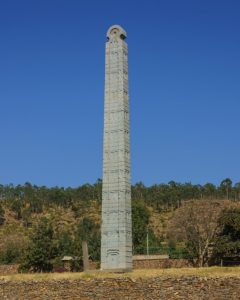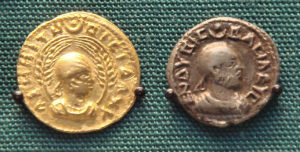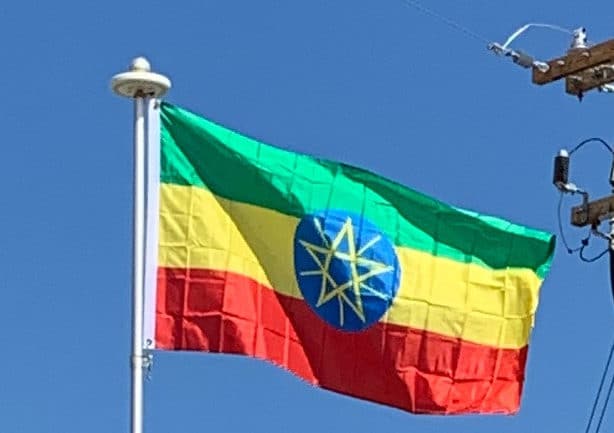
In 2019, archaeologists discovered a 30,000-year-old Middle-Stone Age rock shelter at the Fincha Habera site in the Bale Mountains of Ethiopia at an elevation of 3,469 metres above sea level. At this high altitude humans are susceptible both to hypoxia and to extreme weather. According to a study published in the journal Science, this dwelling is proof of the earliest permanent human occupation at high altitude yet discovered. Thousands of animal bones, hundreds of stone tools, and ancient fireplaces were discovered, revealing a diet that featured giant mole rats.
Antiquity:
Around the 8th century BC, a kingdom known as Dʿmt was established in Tigray, in northern Ethiopia, and Eritrea. The polity’s capital was located at Yeha, in northern Ethiopia. Most modern historians consider this civilization to be a native Ethiopian one, although Sabaean-influenced because of the latter’s hegemony of the Red Sea.
Other scholars regard Dʿmt as the result of a union of Afroasiatic-speaking cultures of the Cushitic and Semitic branches; namely, local Agaw peoples and Sabaeans from South Arabia. However, Ge’ez, the ancient Semitic language of Ethiopia, is thought to have developed independently from Sabaean, one of the South Semitic languages. As early as 2000 BC, other Semitic speakers were living in Ethiopia and Eritrea where Ge’ez developed. Sabaean influence is now thought to have been minor, limited to a few localities, and disappearing after a few decades or a century. It may have been a trading or military colony in alliance with the Ethiopian civilization of Dʿmt or some other proto-Aksumite state.
After the fall of Dʿmt during the fourth century BC, the Ethiopian plateau came to be dominated by smaller successor kingdoms. In the first century AD, the Kingdom of Aksum emerged in what is now Tigray and Eritrea. According to the medieval Book of Aksum, the kingdom’s first capital, Mazaber, was built by Itiyopis, son of Cush. Aksum would later at times extend its rule into Yemen on the other side of the Red Sea. The Persian religious figure Mani listed Aksum with Rome, Persia, and China as one of the four great powers of his era, during the 3rd century.

Around 316 AD, Frumentius and his brother Edesius from Tyre accompanied their uncle on a voyage to Ethiopia. When the vessel stopped at a Red Sea port, the natives killed all the travellers except the two brothers, who were taken to the court as slaves. They were given positions of trust by the monarch, and they converted members of the royal court to Christianity. Frumentius became the first bishop of Aksum. A coin dated to 324 shows that Ethiopia was the second country to officially adopt Christianity (after Armenia did so in 301), although the religion may have been at first confined to court circles; it was the first major power to do so.

The weakened Axumite dynasty came to an end in the 9th century when Yodit defeated the last king of the dynasty. Empress Yodit’s reign, which lasted for 40 years, aimed to abolish Christianity (a religion first accepted by King Ezana of the Axumite dynasty) by burning down churches and crucifying people who remained faithful to the orthodox Tewahedo church, which at the time was considered as the religion of the state. The Empress tried to force many people to change their religion and destroyed much historical heritage of the Axumite dynasty earning her the epithet of Yodit Gudit (in Amharic ዮዲት ጉዲት). Her reign finally came to an end in 912 following her defeat by the first leader of the Zagwe dynasty. The reign of the Zagwe dynasty came to an end by the rise of Yekuno Amlak.
During Muhammad’s Era:
The first interaction that the Islamic Prophet Muhammad had with Ethiopia was during the reign of Aṣḥama ibn Abjar, who was at the time the Emperor of Aksum and gave refuge to several Muslims in the Kingdom of Aksum in 614 AD. According to other authors, Ashama may have been the same person as king Armah, or his father or son. Taddesse Tamrat records that the inhabitants of Wiqro, where the ruler is known as Ashamat al-Negashi, claim that his tomb is located in their village.
